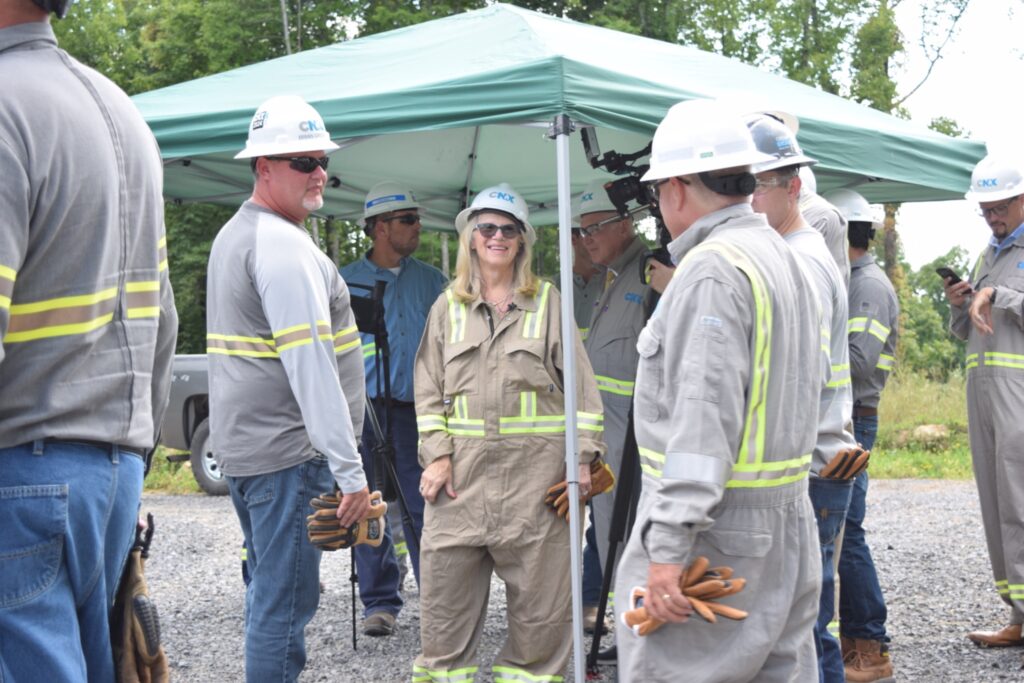Last week, I had the privilege of joining WGCI member CNX and members of Congress for a tour of a CNX facility in southwestern Virginia.
Reps. Carol Miller and Randy Feenstra of the Ways and Means Supply Chain Tax Team, as well as Reps. Morgan Griffith and Mike Kelly, toured CNX’s mine methane capture facility in Tazewell County, Virginia. The Supply Chain Tax Team is one of ten Tax Teams formed by the Ways and Means Committee to study key tax provisions from the Tax Cuts and Jobs Act of 2017 (TCJA) that are set to expire at the end of 2025.
With thermal imaging, we got to see firsthand the impact of this technology that reduces greenhouse gas emissions and helps to keep more than 1,200 miners safe every day. It made clear to me that the lawmakers’ work to support this technology could not be more necessary. This visit was an extraordinary opportunity to showcase one of the few mines operating methane capture technology, the benefits of the technology for communities, and the reasons we need lawmakers’ continued support to expand investments in and deployment of methane capture operations.
Coal mine methane (CMM) is a largely untapped energy resource that can significantly contribute to meeting the growing electricity demands in the U.S. This site visit underscored the importance of incorporating CMM into an all-of-the-above energy strategy to meet rising energy demands.
The potential economic benefits of CMM capture are substantial. In Virginia, capturing and utilizing CMM could create hundreds of jobs and contribute more than $175 million to the state’s GDP over the next 20 years. The Virginia Department of Energy has also identified significant advantages of CMM capture, recommending state incentives to support this technology. Such measures are vital for creating new economic opportunities and revitalizing communities that have faced significant economic hardship due to the decline of the coal industry.
According to EPA data, CMM capture could reduce emissions equivalent to consuming more than 3.7 billion gallons of gasoline per year. This environmental benefit, combined with significant economic gains, makes CMM capture a win-win solution for the country.
The WGCI’s mission is crucial for increasing economic activity, revitalizing historically coal-dependent regions, and addressing environmental needs by reducing methane emissions. In joining last week’s site visit, I had the opportunity to highlight the WGCI’s commitment to promoting CMM capture as part of a comprehensive energy strategy. The visit served as a powerful reminder of the need for federal policymakers to follow Virginia’s lead and implement incentives that support the growth of the CMM industry.
The Methane Reduction and Economic Growth Act, introduced by Reps. Carol Miller and Guy Reschenthaler, exemplifies the type of legislative support needed to unlock the full potential of CMM capture. This act is crucial for reducing emissions, boosting energy production, and attracting investment in new technologies.
As America navigates its energy future, embracing technologies like CMM capture is a common-sense solution that addresses both environmental and economic challenges. I look forward to continuing the WGCI’s advocacy for the support needed to make CMM capture a cornerstone of America’s energy strategy.
Mike Moore is the Executive Director of the Waste Gas Capture Initiative.


